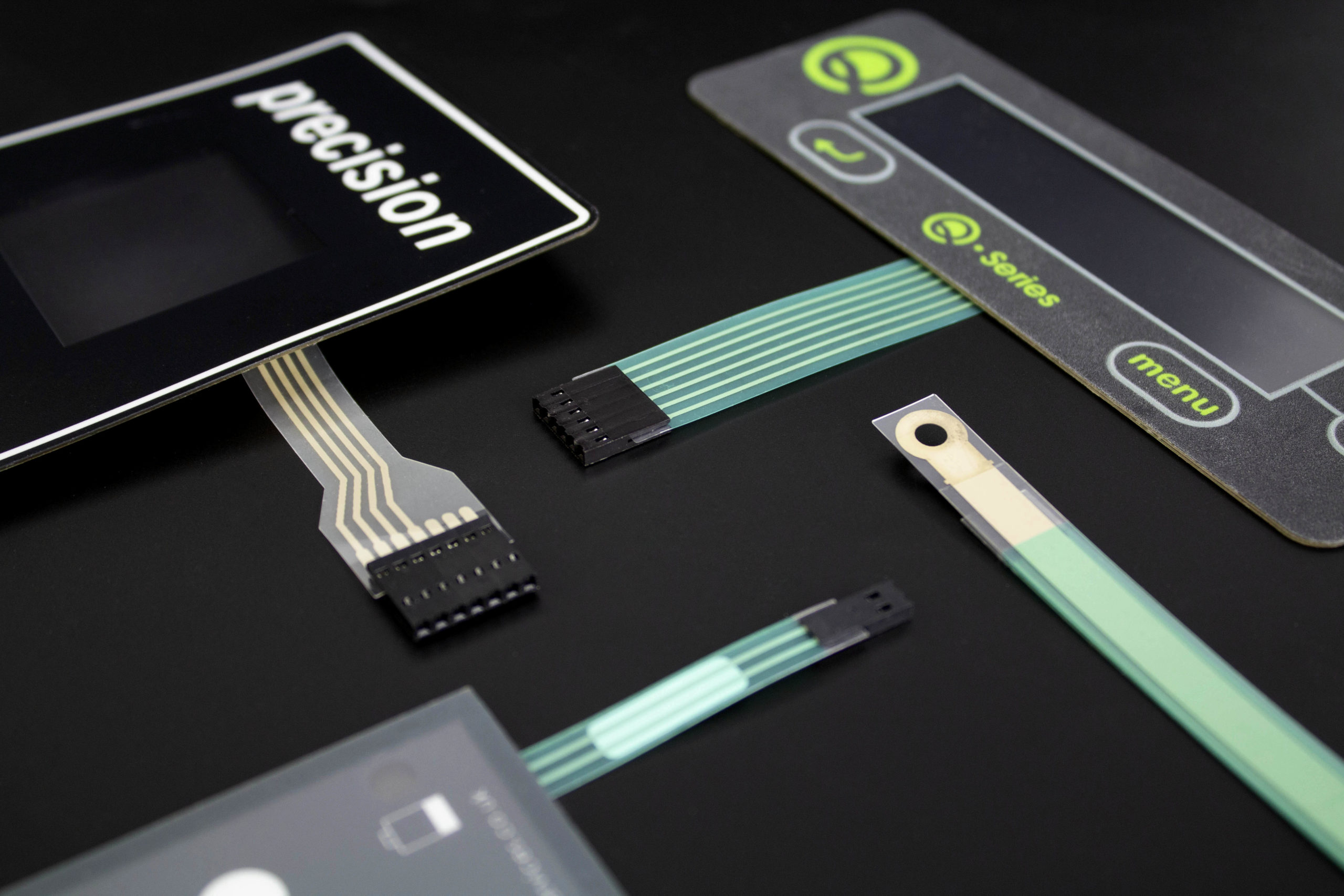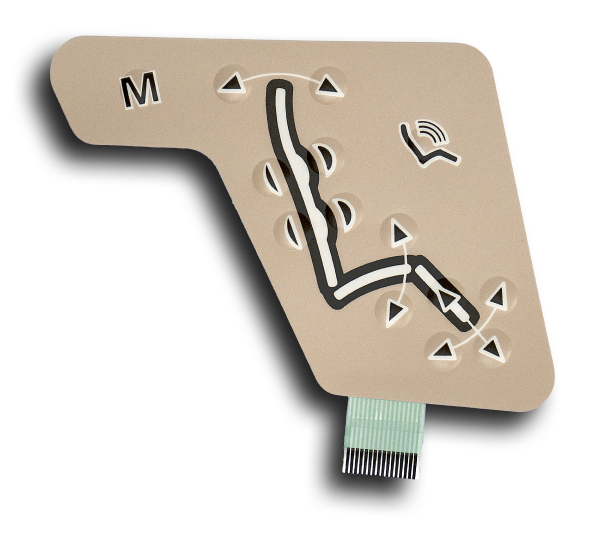The Production Process Behind Membrane Change: What You Need to Know
The production process behind membrane layer changes combines mindful layout, product selection, and top quality control. It begins with recognizing the intricacies of membrane layer switch design and proceeds through numerous stages, consisting of material selections and printing techniques. Each stage plays an important duty in guaranteeing capability and resilience. The complexities of layer building and construction and the rigorous testing requirements might disclose insights that are not promptly noticeable. What lies past these fundamental elements?
Understanding Membrane Switch Over Layout
Although membrane buttons might show up easy in the beginning look, their layout includes intricate considerations that ensure performance and durability. The style process begins with a complete understanding of customer needs, consisting of the user interface's intended application and environmental factors. Functional designs is a crucial aspect, as the design needs to assist in convenience of usage while making certain that responsive responses satisfies individual expectations.Moreover, the layering of elements, such as graphic overlays, adhesive layers, and conductive traces, must be precisely crafted. membrane switch. This split setup not only affects the button's responsiveness however likewise impacts its longevity. Focus is provided to the sealing techniques used to shield versus wetness and dust, which might compromise performance. Furthermore, design factors to consider extend to visual appeals, where color plans and visual quality improve customer experience. Inevitably, the design of membrane changes balances capability, user experience, and sturdiness, guaranteeing that they meet the needs of numerous applications properly
Materials Made Use Of in Membrane Switch Over Manufacturing
When picking products for membrane button production, it is necessary to ponder both performance and toughness. The primary materials include polyester and polycarbonate movies, which provide versatility and toughness. These movies are frequently coated with glue to ensure appropriate bonding to substrates. Conductive inks, usually composed of silver or carbon, are essential for developing electric links within the switch, allowing for trustworthy operation.Additionally, a protective layer, such as a difficult layer, is frequently related to improve scratch resistance and durability. The choice of backing material, such as acrylic or foam, can substantially affect the switch's tactile feel and general individual experience. In addition, different ecological factors, consisting of temperature and humidity, ought to lead material option to assure peak performance in details applications. Ultimately, the appropriate combination of products adds to the membrane button's functionality and life expectancy, making notified choices crucial for manufacturers.
The Printing Process: Creating Video and Text
The printing procedure in membrane switch manufacturing plays a significant role in generating top quality graphics and message. Various graphic design techniques are utilized to ensure visual appeal and performance, while mindful ink selection approaches are essential for toughness and performance. Understanding these elements is essential for achieving finest cause membrane layer switch layout.
Graphic Style Techniques
Graphic layout methods play a necessary duty in the printing procedure of membrane layer switches, as they define how graphics and text will eventually show up on the end product. Efficient visuals style includes the calculated use of typefaces, designs, and shades to enhance readability and visual allure. Developers frequently make use of vector graphics for scalability, guaranteeing that pictures continue to be sharp at different dimensions. Furthermore, attention to contrast and alignment is crucial, as it affects individual interaction and visual quality. The consolidation of branding aspects, such as logos, have to be handled with treatment to keep brand integrity. Overall, thoughtful graphic layout techniques contribute considerably to the performance and good looks of membrane layer switches, influencing individual experience and product performance.
Ink Selection Techniques
Selecting the suitable ink is necessary for achieving the desired aesthetic quality and sturdiness in membrane button production. Various ink kinds are used, consisting of solvent-based, water-based, and UV-curable inks. Each kind offers distinct features, such as resistance, adhesion, and versatility to environmental aspects. Solvent-based inks are usually preferred for their longevity and vibrant shades, while water-based inks are much more ecologically pleasant however might have constraints in attachment. UV-curable inks provide fast curing and durable performance. In addition, shade matching techniques ensure that the chosen inks align with design specifications. Ultimately, the selection of ink need to take into consideration factors such as application technique, substratum compatibility, and end-use requirements to accomplish exceptional lead to membrane switch graphics and message.
Layer Building And Construction and Setting Up

Material Choice Process
A cautious option of materials is vital in the manufacturing procedure of membrane layer switches, as it straight influences functionality and longevity. The primary materials utilized include polyester, polycarbonate, and various conductive inks. Polyester is frequently favored for its exceptional resistance to chemicals and abrasion, making it suitable for severe environments. Polycarbonate, on the various other hand, supplies exceptional clarity and effect resistance, which is helpful for applications calling for exposure and toughness. Conductive inks, typically composed of silver or carbon, are crucial for producing trusted electric paths. In addition, the selection of sticky materials influences the total integrity of the button - membrane switch. Assessing variables such as environmental exposure, tactile comments, and aesthetic needs overviews manufacturers in selecting the finest materials for their specific applications
Layer Attachment Techniques
Adhering layers in membrane switch building is a vital process that ensures performance and durability. Numerous bond methods are employed to secure perfect bonding in between layers, which typically consist of making use of adhesives, warmth, and stress. Pressure-sensitive adhesives (PSAs) are typically used for their convenience of application and prompt bonding capacities. Furthermore, thermal bonding methods can be applied, where heat is utilized to activate glue residential or commercial properties, websites protecting a strong bond. The choice of attachment method mostly depends upon the products entailed and the certain application demands of the membrane layer button. Appropriate positioning and uniform application of adhesives are important to protect against problems, protecting the button runs successfully throughout its intended life-span.
Quality Assurance Actions
Guaranteeing quality assurance throughout the layer building and construction and setting up of membrane switches is essential for keeping performance and dependability. This process typically includes numerous essential steps, consisting of complete assessments at each stage of production. Manufacturers utilize advanced screening approaches, such view as peel tests and bond assessments, to validate the integrity of layer bonds. Furthermore, aesthetic assessments are performed to recognize any type of problems in printing or material incongruities. Ecological conditions, such as temperature level and humidity, are very carefully kept an eye on to guarantee perfect healing and attachment. Routine calibration of tools helps preserve exact manufacturing standards. By carrying out these top quality control procedures, manufacturers can significantly lower the danger of product failing, assuring that the last membrane layer changes fulfill the needed specs and customer assumptions.
Evaluating and Quality Assurance Steps

Advancements in Membrane Layer Change Modern Technology
As innovations in innovation proceed to evolve, membrane switches are gaining from ingenious advancements that improve their capability and individual experience. One remarkable technology is the combination of capacitive touch modern technology, which permits even more responsive and instinctive individual interfaces. This change not only boosts appearances however also decreases mechanical wear and tear, prolonging the life-span of the switches.Additionally, improvements in graphic overlay products have brought about boosted longevity and resistance to ecological elements such as moisture and UV light. These products currently supply boosted clearness and illumination, further boosting the aesthetic appeal.Furthermore, the incorporation of smart innovation is changing membrane switches into interactive control panels, making it possible for connection with IoT devices. This connection cultivates a seamless user experience, leading the way for applications in various industries, from health care to consumer electronics. Jointly, these technologies setting membrane switches as essential parts in contemporary tool design.
Regularly Asked Questions
How much time Does the Membrane Layer Switch Over Manufacturing Refine Take?
The duration of the membrane layer switch production procedure can vary significantly. Aspects such as intricacy, products utilized, and manufacturing volume impact timelines, with common production varying from a couple of days to numerous weeks for completion.
What Are the Common Applications for Membrane Buttons?
Membrane layer buttons are frequently used in numerous industries, consisting of automobile controls, house appliances, clinical tools, and consumer electronics (membrane switch). Their adaptability and resilience additional resources make them perfect for applications requiring user-friendly user interfaces and reliable efficiency in diverse atmospheres
Can Membrane Switches Be Custom-made for Particular Requirements?

What Is the Lifespan of a Normal Membrane Change?
The life expectancy of a common membrane button differs, however typically, it ranges from 1 to 5 million cycles. Aspects such as use, setting, and material high quality significantly affect durability and total efficiency in time.

Are Membrane Layer Switches Eco Pleasant?
The environmental kindness of membrane switches varies. Some materials utilized may not be recyclable, while others can be eco-friendly. The general influence depends on manufacturing practices and materials, demanding mindful consideration throughout selection and disposal. The production procedure behind membrane layer switches over combines mindful style, product choice, and quality control. It begins with understanding the details of membrane button layout and proceeds via different phases, including material options and printing strategies. When choosing materials for membrane switch production, it is vital to consider both performance and toughness. A mindful option of products is necessary in the production process of membrane switches, as it directly influences capability and sturdiness. The selection of attachment technique greatly depends on the products entailed and the specific application requirements of the membrane layer button.
Comments on “Developing intuitive user interfaces with membrane switch”